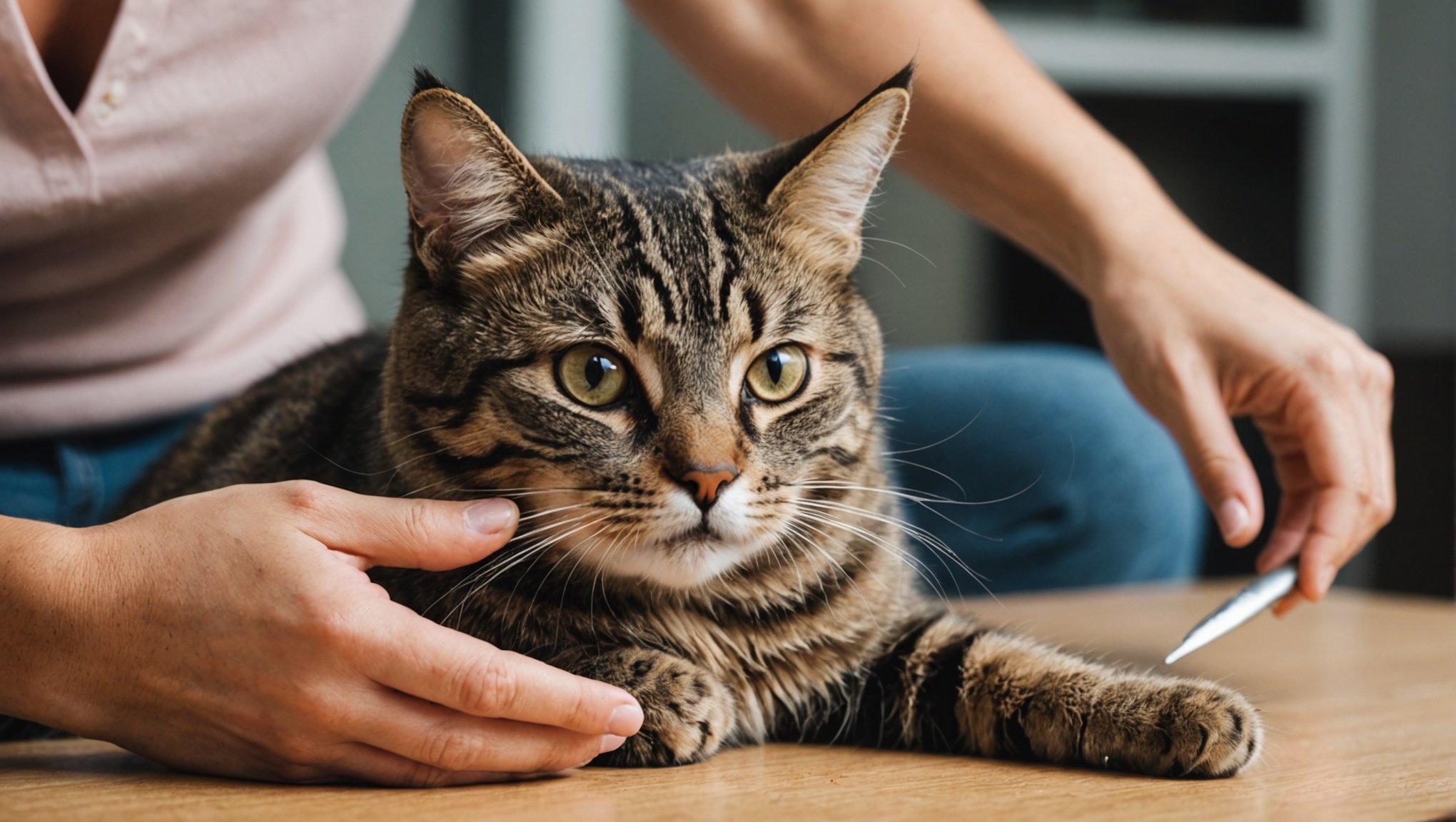Nail clipping is essential for your cat’s health, but it can often feel like a daunting task for both you and your furry friend. Understanding your cat’s perspective is key to easing their anxiety and fostering cooperation. By implementing gentle techniques and positive reinforcement, you can transform this stressful ritual into a more pleasant experience. Discover effective strategies to help your cat grow comfortable with nail clipping, ensuring a harmonious grooming routine without the need for stress or restraint.
Understanding Your Cat’s Behavior
Cats are fascinating creatures, and understanding their behavior, especially during grooming, is key to ensuring their comfort. Cats have natural instincts regarding their paws, which are sensitive and often a source of stress during nail clipping. This sensitivity stems from their evolutionary need to protect their paws, crucial for hunting and climbing. Thus, touching their paws might trigger a defensive reaction.
A lire aussi : Mastering Clicker Training: Seamlessly Incorporate It into Your Cat”s Daily Life for Positive Behavior Changes
Recognizing signs of anxiety in cats during grooming can help mitigate stress. Common signs include dilated pupils, flattened ears, twitching tails, and vocalizations such as hissing or growling. If these signs are evident, it may be beneficial to pause grooming and allow the cat to relax.
It’s also important to acknowledge the unique personality of each feline. Some cats may be more tolerant of grooming, while others might be more prone to stress. Understanding your cat’s individual behavior can guide you in creating a more comfortable grooming experience. For instance, some cats may prefer a quiet environment, while others might feel more at ease with soothing music.
A lire également : Selecting the Right Probiotics and Dosage for Your Cat”s Digestive Health: A Comprehensive Guide
By paying attention to these aspects, you can ensure that nail clipping becomes a less stressful experience for your feline friend.
Creating a Calming Environment
Designing a stress-free grooming space for your cat can significantly enhance their comfort during grooming sessions. Start by selecting a quiet and safe area away from household noise and distractions. This helps in reducing anxiety and allows your cat to feel secure.
Tips for a Comfortable Space
- Calming Scents: Consider using feline-friendly pheromone sprays or diffusers to create a soothing atmosphere. These scents mimic natural cat pheromones, promoting relaxation.
- Soothing Sounds: Soft, calming music or nature sounds can help distract your cat from the grooming process. Ensure the volume is low to avoid startling them.
Consistent Routine
Establishing a consistent grooming routine is crucial for your cat’s comfort. Cats thrive on predictability, so try to groom them at the same time and place. This consistency helps reduce anxiety, as your cat will know what to expect.
By focusing on these aspects, you can create a cat environment that makes grooming a more pleasant experience. A comfortable space and a calming routine can transform a potentially stressful task into a bonding opportunity. Remember, patience and understanding are key to achieving a stress-free grooming session.
Step-by-Step Training Techniques
Training your cat for nail trimming can be made easier with gradual exposure and positive reinforcement. These cat training techniques focus on breaking down the process into manageable steps to help your feline friend become accustomed to grooming.
Gradual Exposure Techniques
Start by gently handling your cat’s paws without attempting to trim. This initial step helps your cat get used to the sensation. Gradually increase the duration of these sessions over time, ensuring your cat remains comfortable.
Manageable Steps
Break the nail trimming process into smaller tasks. Begin by letting your cat see and sniff the clippers. Once they are comfortable, proceed to clip just one nail at a time. Reward them with treats and praise after each successful step to build a positive association.
Positive Reinforcement
Incorporate treats and praise throughout the training. This encourages your cat to associate nail trimming with positive experiences. Use their favourite treats and offer them immediately after each small success. Consistent reinforcement will help your cat feel more relaxed and cooperative during grooming sessions.
By using these techniques, you can transform nail trimming from a stressful task into a more enjoyable experience for both you and your cat.
Gradual Desensitization Strategies
Helping your cat adapt to the nail clipping process can be achieved through gradual desensitization. This approach involves slowly introducing your cat to nail clippers, allowing them to become familiar with the tool without feeling threatened. Begin by placing the clippers near your cat during relaxed moments, such as when they are lounging or napping. Let them sniff and explore the clippers at their own pace.
Incorporating playtime as a distraction can also be beneficial. Engage your cat in their favourite games before attempting any grooming. This not only tires them out but also creates a positive association with the grooming session. You can introduce the clippers during play by briefly touching their paws with them, ensuring it feels like part of the game rather than a separate task.
Throughout the desensitization process, it’s crucial to monitor your cat’s comfort levels. Pay attention to their body language and stop if they show signs of distress, such as pulling away or vocalizing discomfort. Patience is key, and it’s important to progress at a pace that suits your cat’s unique temperament. By doing so, you can make the nail clipping process less intimidating and more manageable.
Positive Reinforcement Methods
Understanding how to effectively use positive reinforcement can transform your cat’s grooming experience into a more enjoyable one. This involves using cat rewards like treats and toys to encourage desired behaviours during behavioral training.
To start, identify what motivates your cat. This could be their favourite treats, a beloved toy, or even extra petting. Knowing what your cat values most is key to successful behavioral training. For instance, many cats respond well to small, tasty treats or interactive toys that engage their hunting instincts.
Timing and consistency are crucial when offering rewards. Deliver the reward immediately after your cat displays the desired behaviour, such as sitting calmly during grooming. This helps your cat make a clear connection between the action and the reward. Consistency is also vital; ensure you reward your cat every time they exhibit the desired behaviour to reinforce it.
Incorporating positive reinforcement into your cat’s grooming routine can help reduce anxiety and build trust. By focusing on rewarding good behaviour, you can create a positive association with grooming activities, making the experience more pleasant for both you and your feline friend.
Expert Insights and Personal Anecdotes
Navigating the world of cat care can be daunting, but insights from experienced cat owners and veterinarians can provide invaluable guidance. Many seasoned cat enthusiasts share stories of trial and error, highlighting the importance of patience and understanding in the training process. One owner recalls how gradually building trust with their feline through consistent, gentle handling made nail clipping a more positive experience.
Veterinarians often emphasise the significance of using proper nail clipping techniques to ensure safety and comfort. According to experts, using the right tools and maintaining a calm demeanour can significantly reduce a cat’s stress during grooming. They advise holding the clippers at a 45-degree angle to avoid cutting the quick, which can be painful for cats.
Moreover, patience is crucial. Cats are naturally independent creatures, and forcing them into uncomfortable situations can lead to resistance. Instead, experts suggest taking breaks if a cat shows signs of distress, allowing them to relax before continuing.
By combining expert advice with personal experiences, cat owners can develop effective strategies for nail trimming, ensuring a less stressful and more harmonious grooming routine for both themselves and their furry companions.
Alternative Tools for Nail Clipping
Exploring different cat grooming tools can significantly enhance your feline’s grooming experience. Various nail clippers and accessories are designed to cater to the unique needs of cats, offering more stress-free solutions during grooming sessions.
Nail Clippers and Grinders
Traditional nail clippers are a common choice, but nail grinders are gaining popularity for their gentle approach. Grinders work by gradually filing down the nail, reducing the risk of accidental cuts and making the process less intimidating for cats. This can be particularly beneficial for cats that are sensitive to the sound or pressure of clippers.
Cat-Friendly Accessories
When selecting grooming tools, consider cat-friendly grooming accessories that prioritise comfort and safety. Look for clippers with ergonomic handles for better grip and control. Additionally, some models come with safety guards to prevent overcutting, which can lead to discomfort or injury.
Recommendations
For a more stress-free grooming experience, it’s advisable to choose tools specifically designed for cats. Brands offering silent nail grinders or clippers with adjustable blades can be excellent options. Investing in quality tools not only ensures safety but also helps in building a positive grooming routine.
Maintaining a Positive Experience
Creating a cat grooming routine that is both consistent and enjoyable is essential for long-term success. Begin by establishing a regular schedule that fits seamlessly into your daily life. This predictability helps your cat become accustomed to grooming, reducing anxiety over time.
Incorporating long-term training strategies is key to maintaining a positive experience. Recognize that setbacks may occur, such as your cat becoming resistant or anxious. When these challenges arise, it’s important to pause and reassess. Adjust your approach by returning to previous steps or offering additional positive reinforcement. This flexibility ensures that both you and your cat remain comfortable and stress-free.
Celebrating small victories is crucial in building confidence for both you and your feline companion. Acknowledge and reward your cat for calm behaviour during grooming sessions. This could include extra playtime or their favourite treat. By focusing on these positive experiences, you reinforce good behaviour and strengthen your bond.
A stress-free clipping experience is the result of patience, understanding, and a well-structured routine. By prioritising these elements, you can transform grooming into a rewarding and enjoyable activity for both you and your cat.
















